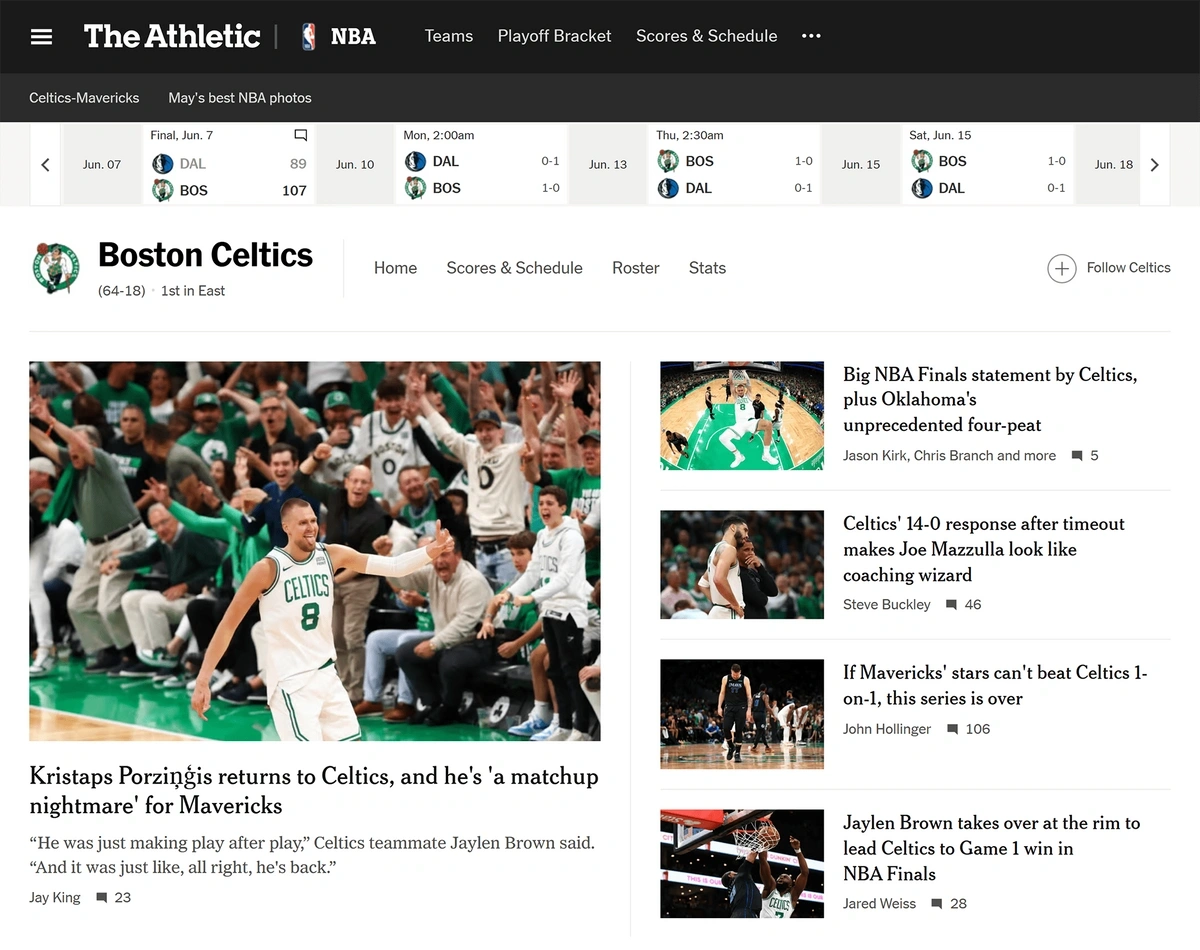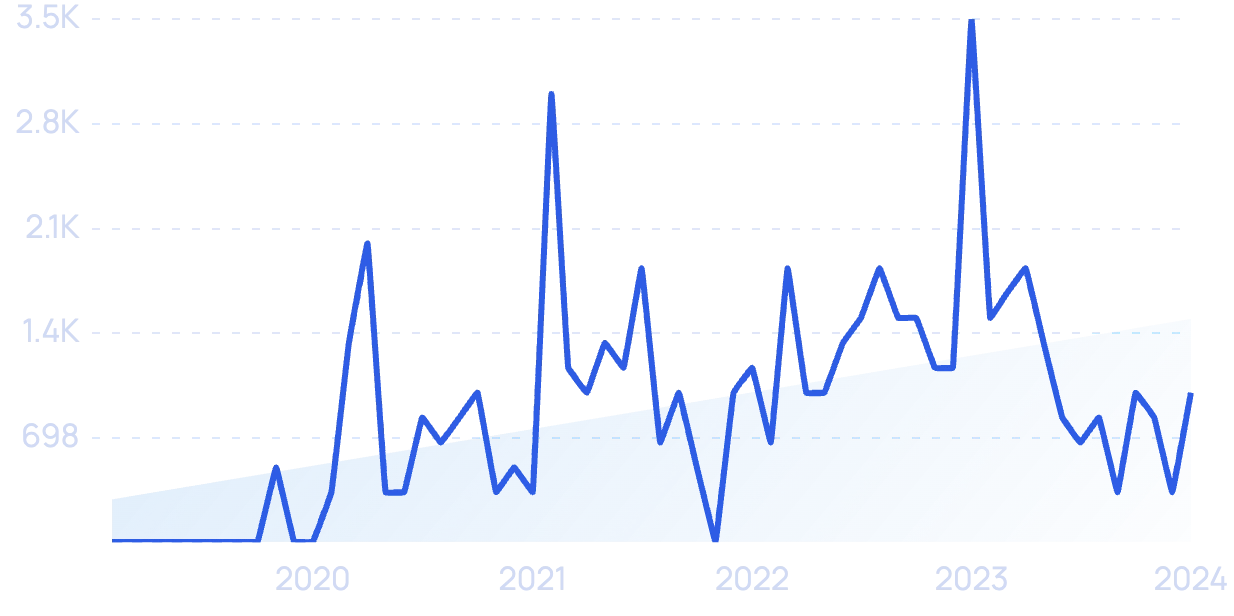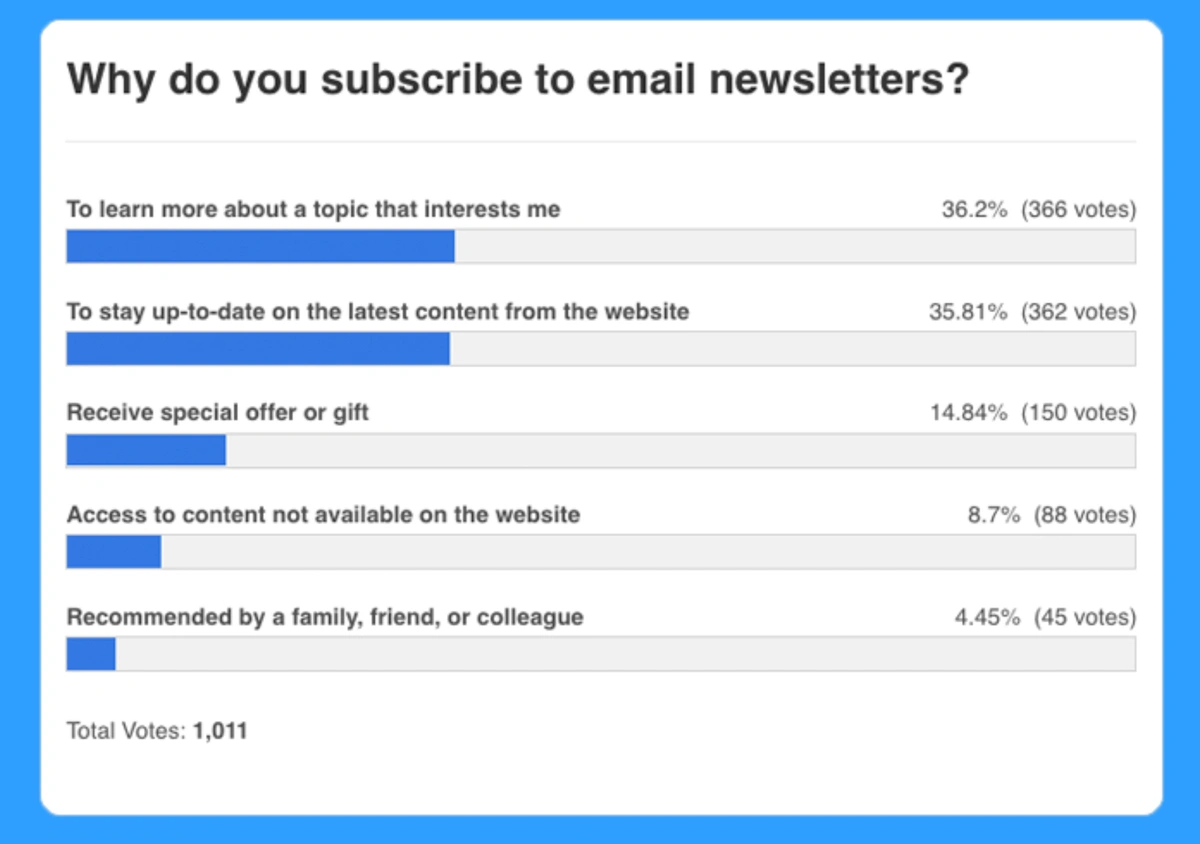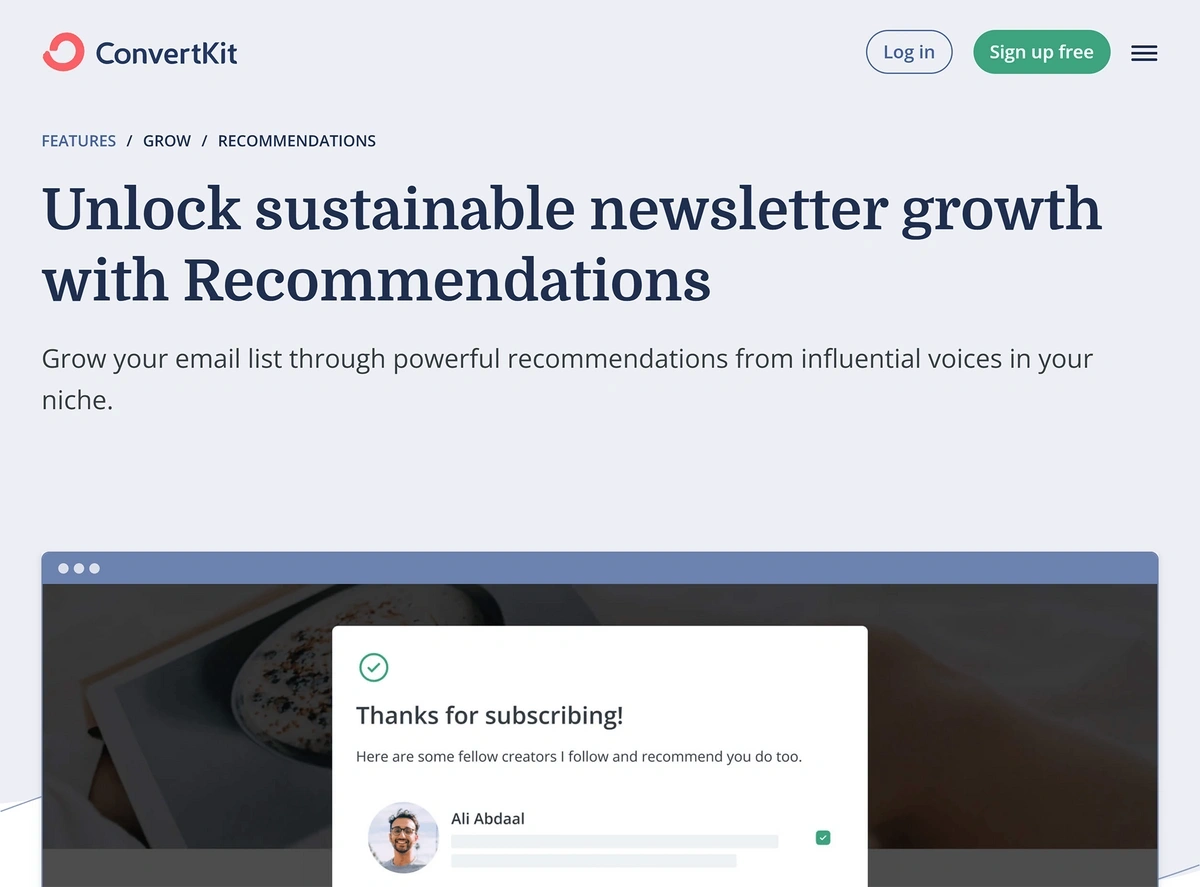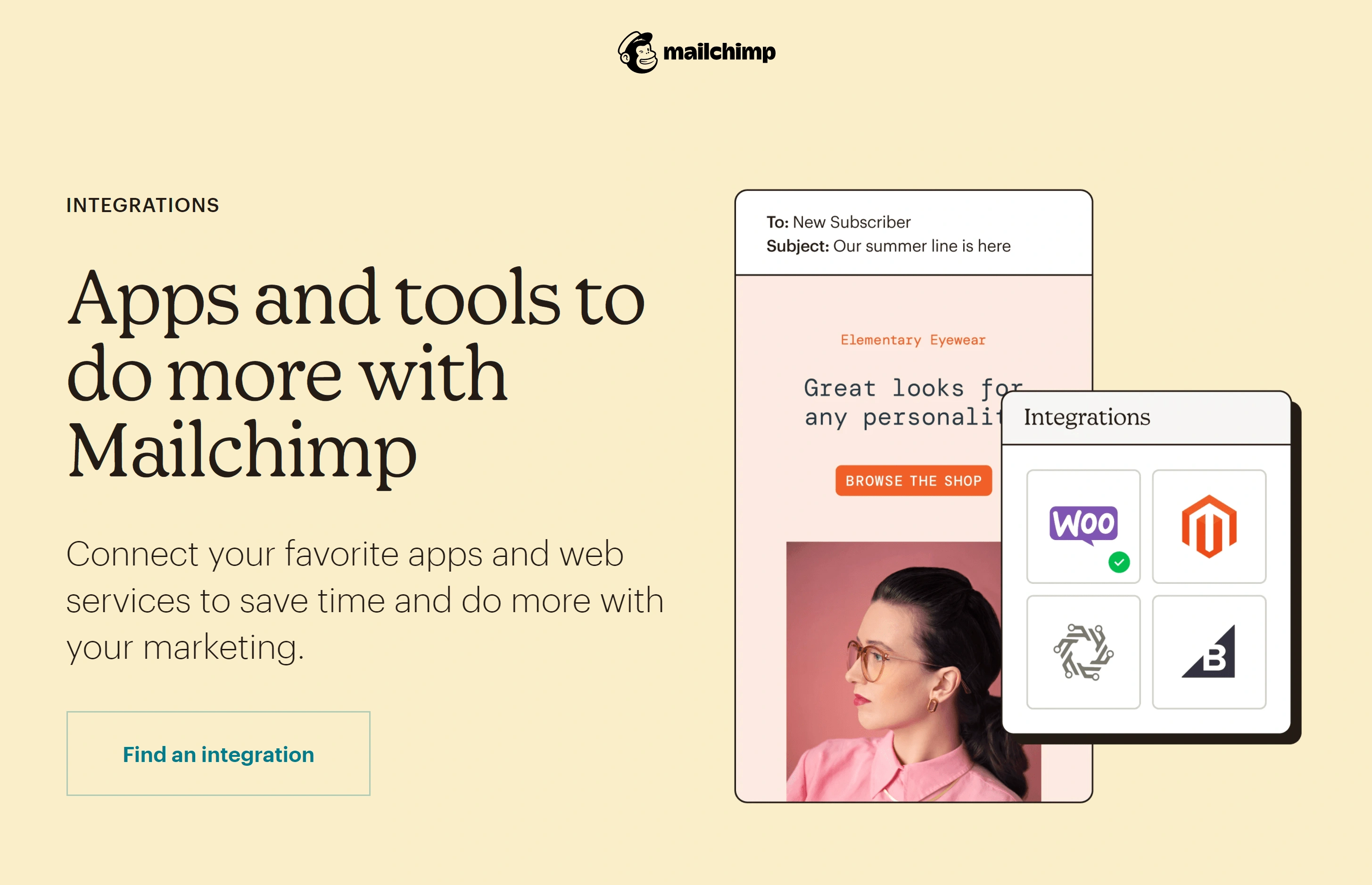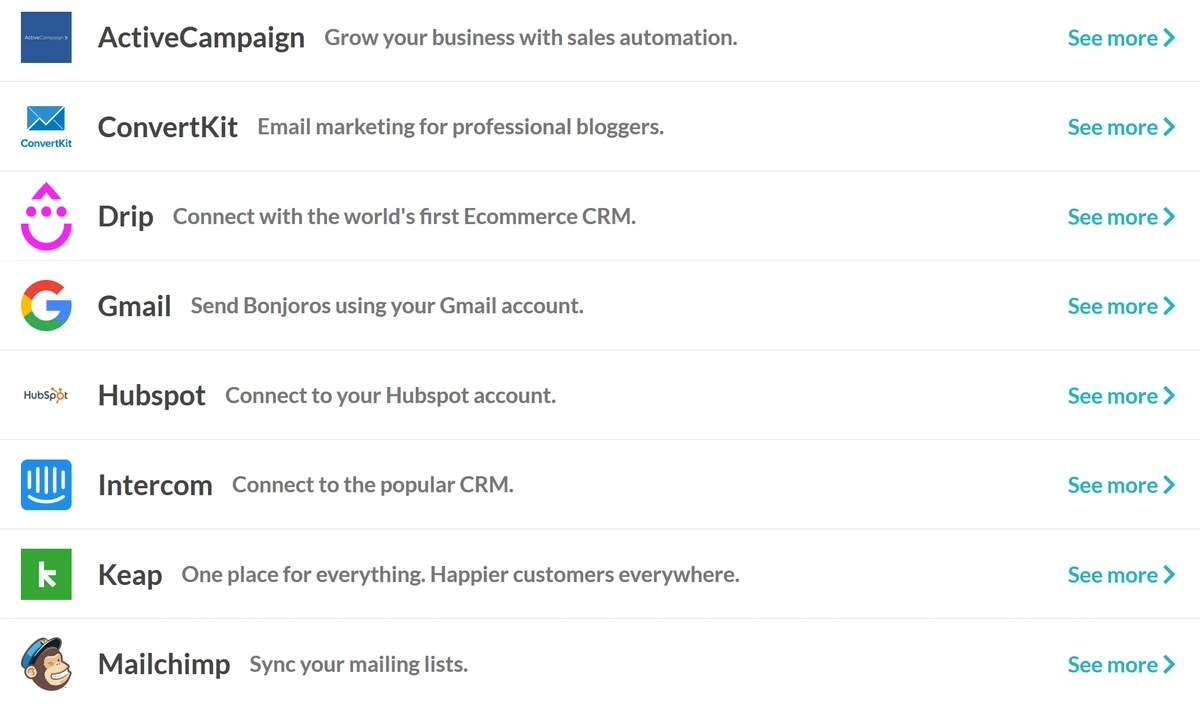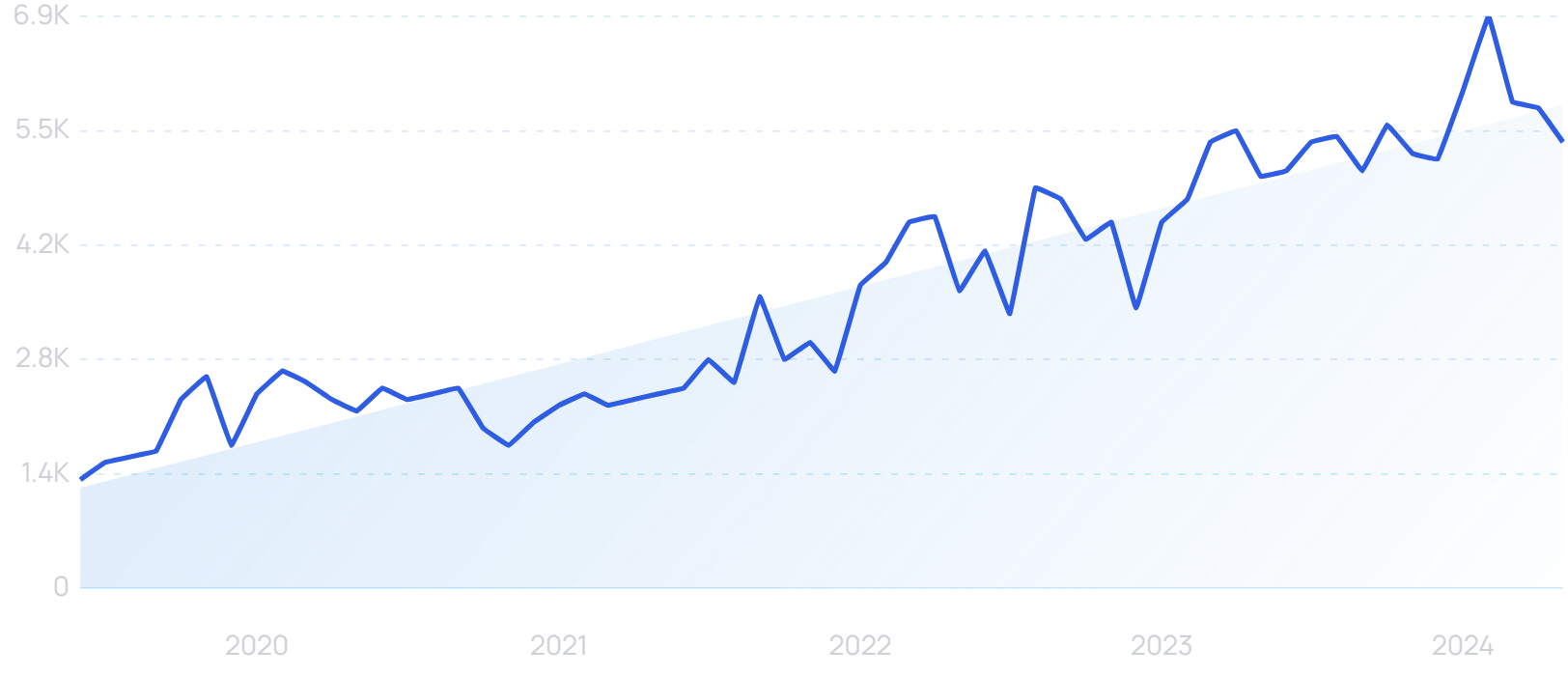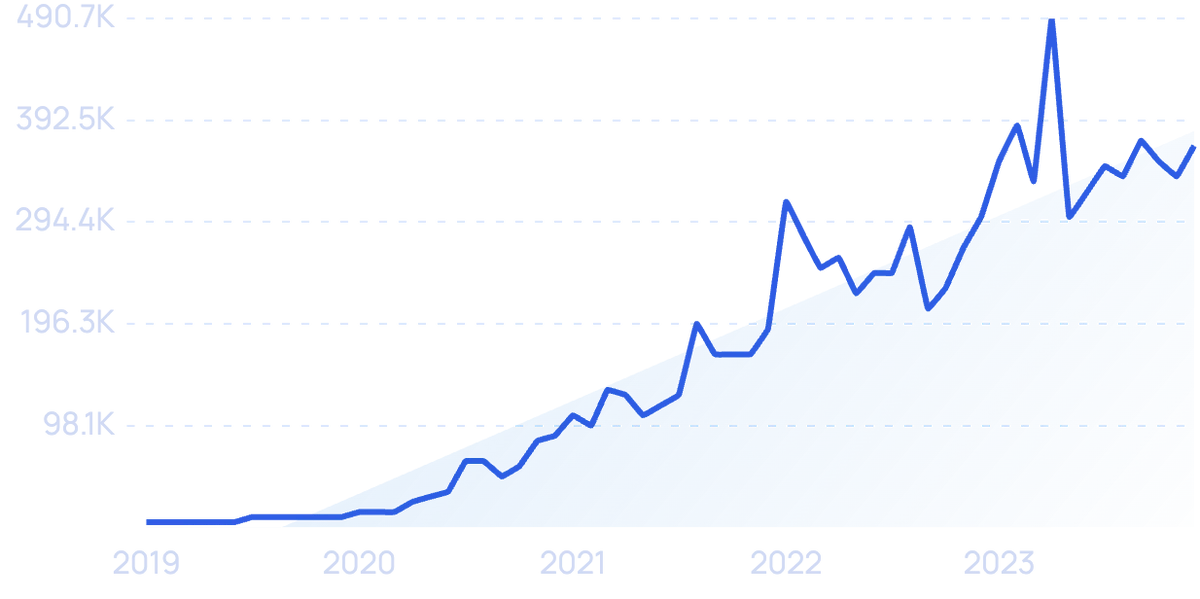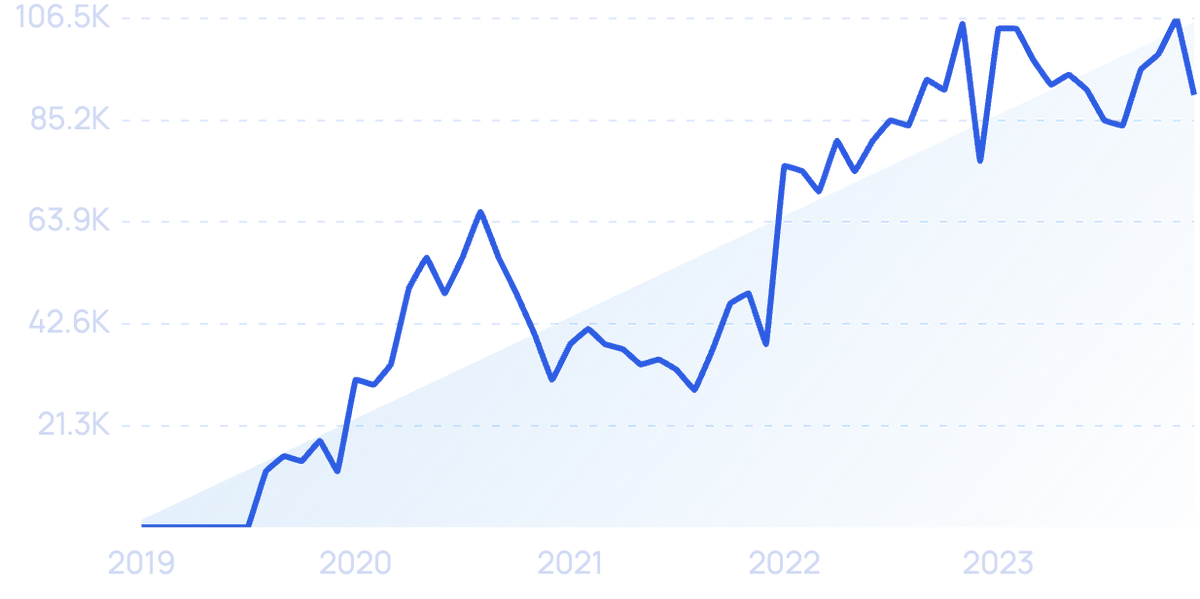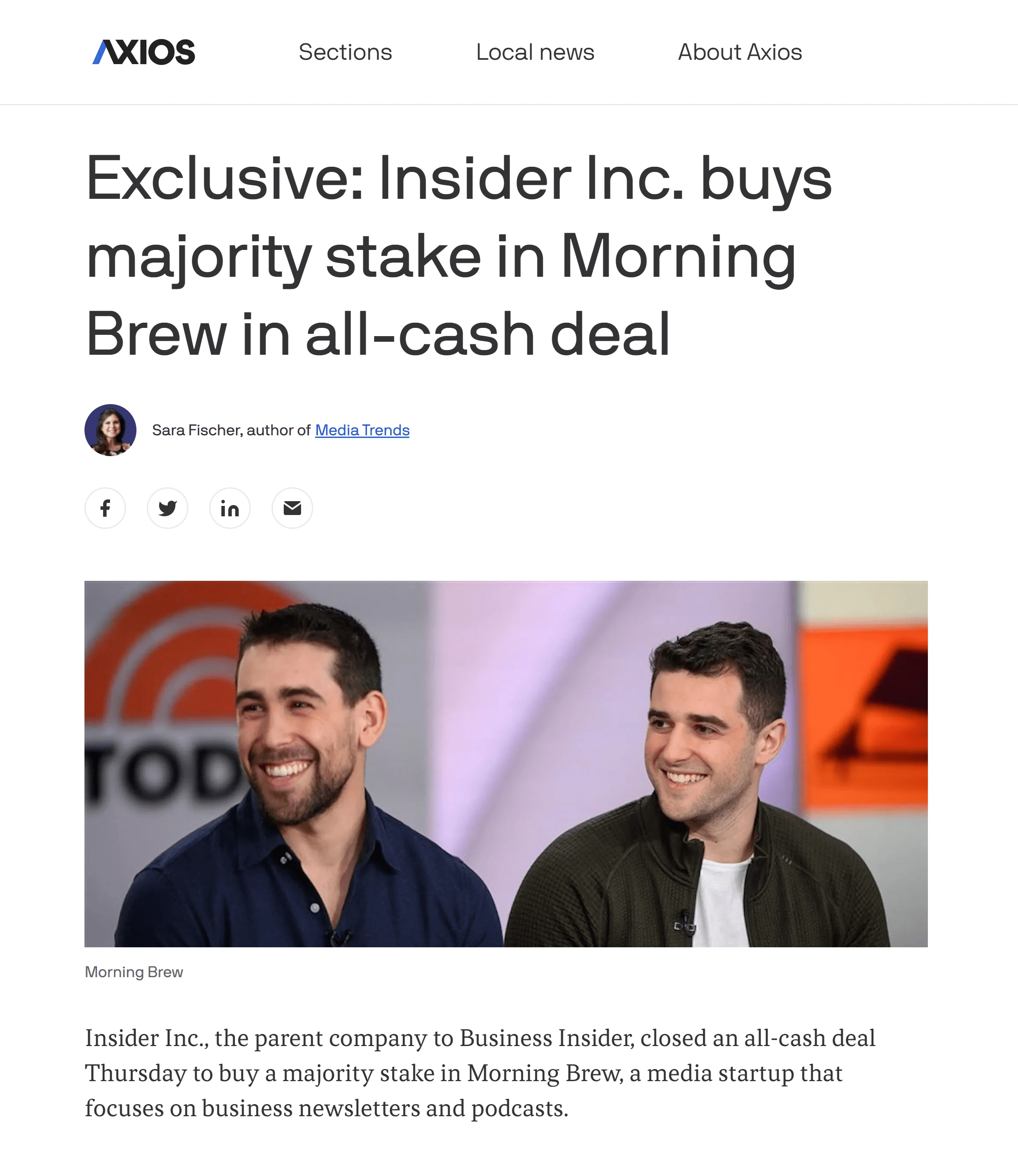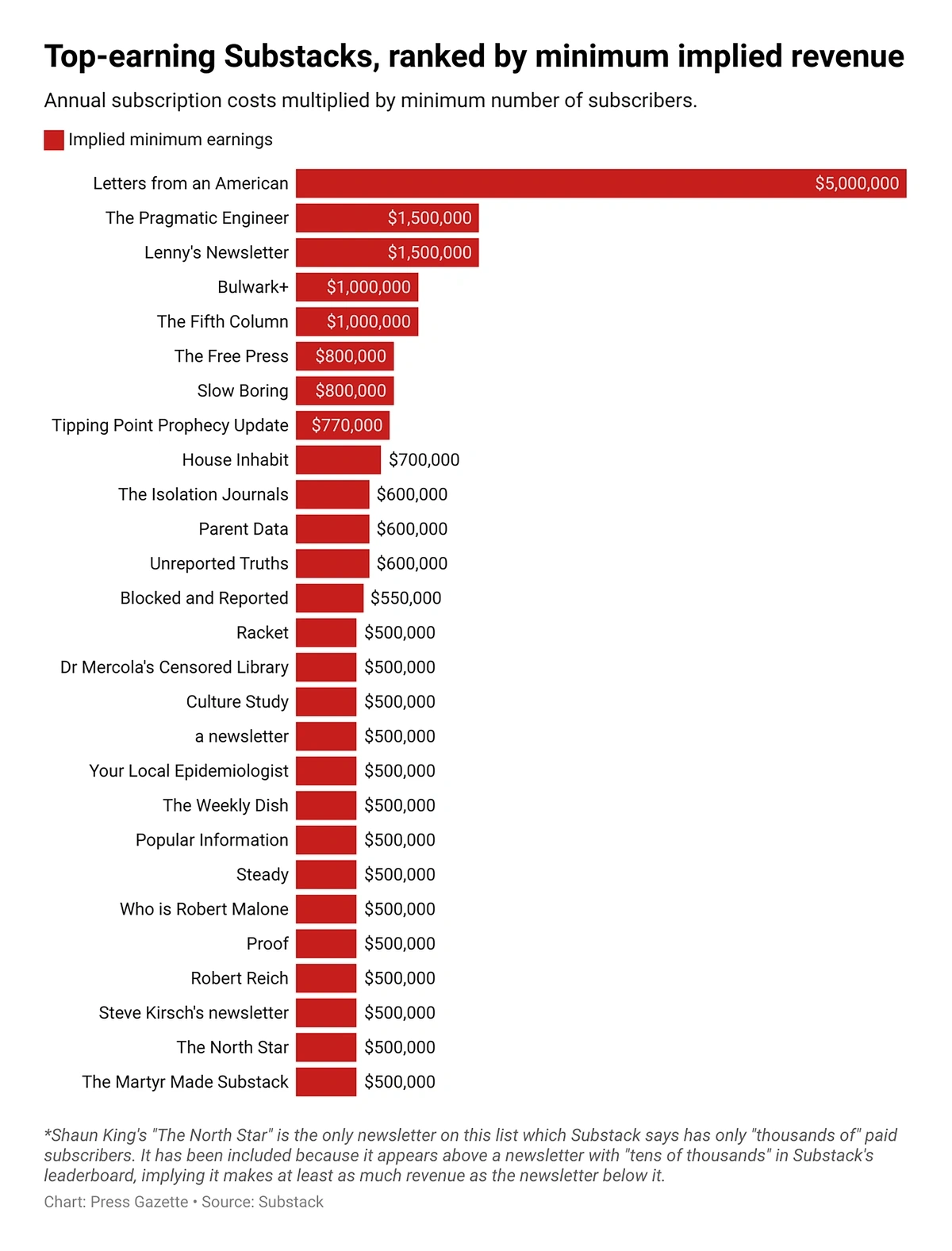
9 Top Email Marketing Trends (2024 & 2025)
You may also like:
Here are 7 of the fastest-growing email marketing trends happening right now.
And the technology, companies, and forces behind them.
Whether email marketing is a proven channel for your business, or if you're just getting started with it, these are the top trends to follow.
1. Email marketers race to leverage AI
Nearly 1/3rd of marketing departments already use generative AI tools.
Search volume for "generative AI" has grown by 9,100% over 2 years.
Generative AI tools like ChatGPT and Perplexity are largely being used to write articles and generate social media images.
However, email marketers are also starting to leverage AI technology.
According to Salesforce, there are a number of ways that AI can (and will) make email marketing more effective:
- Managing campaigns: AI can help marketers understand which elements of their campaigns are working... and which need improving.
- Content creation: Generative AI platforms can help write, outline and edit email copy. And of course, generate images as well.
- Brainstorming: Marketers can use AI to help them brainstorm subject lines, newsletter topics and more.
- Scaling output: AI can help speed up time-consuming processes, like topic brainstorming, creation and email marketing campaign analysis.
2. Newsletters add advanced features
Newsletters are making a huge comeback.
But unlike email newsletters from the 90s, today's newsletters have modern-day features (like personalized email content).
For example, The Athletic's newsletter measures user behavior and location data.
And uses that data to send their subscribers customized content.
The Athletic is one of many newsletters that adapts its content to reader behavior (notably, their location and favorite teams).
That same tech is now largely available to small businesses too.
Most (if not all) email service providers now allow for some level of customization and segmenting.
This makes it easy to send subscribers targeted content that they want.
There's also software like Mailbrew that offers subscribers an email digest of content from Twitter, Reddit, blogs, and more.
Searches for "Mailbrew" are up 2,757% in 5 years.
For a tool like Mailbrew, the newsletter that it generates is the product. Along with a few interesting features (like dark mode) that aren't typically available in most traditional newsletters.
But email marketers are using targeted newsletters as a way to keep in touch with customers.
Plus, people want to get emails from brands.
Around 72% of subscribers listed either staying up to date with a company or learning about a topic of interest as their reason for subscribing to a particular newsletter.
Results from a Disqus survey asking why people subscribe to newsletters.
And modern-day customers favor email newsletters over other ways of staying connected (like Facebook).
When given the option of receiving company updates over social media or email newsletters, 90% of customers chose newsletters.
Another example of this trend is ESPs integrating growth features into their products.
So instead of simply collecting email addresses and sending out campaigns, ESPs are helping customers grow their subscriber count.
For example, Convertkit has a built-in recommendation engine.
Converkit's recommendation feature suggests your newsletter to subscribers of similar content.
Called the "Creator Network", this feature promotes your newsletter automatically to subscribers that my be interested.
3. Integrations expand email marketing capabilities
The average open of a marketing email is 17.8%.
And businesses are relying on a growing network of email marketing integrations in an effort to improve efficiency. And improve customer experience.
For example, email marketing heavyweight Mailchimp has over 170+ integrations with apps including ShopSync, Slack, and Canva.
Mailchimp's integrations are some of the most extensive in the industry.
These integrations help ecommerce businesses track customer engagement.
They also teams to automatically share information on email campaigns.
And make it simple for bloggers to create professional newsletters.
In return, Mailchimp and other email service providers (ESPs) accelerate the growth of the companies behind the integrations.
Take video email solution Bonjoro.
Bonjoro grew partly due to integrations with top ESPs.
Bonjoro’s growth is largely thanks to integrations with tools such as Mailchimp, Convertkit and Zapier.
Integrations make Bonjoro available to Mailchimp’s over 1.2 million email marketing clients and 73% market share.
Bonjoro’s top marketing integrations.
In short, integrations give ESPs superpowers they didn’t have before.
This is why the number of integrations is growing so quickly.
4. Email segmentation becomes the norm
Email segmentation (along with marketing automation) has been one of the biggest digital marketing trends over the last few years.
In other words: segmenting email subscribers into different buckets is nothing new.
What's new is how email segmentation has moved from an "advanced feature" to something that almost every single ESP provides.
And something that more marketers are using in their campaigns.
In fact, 33% of companies segment their audiences for marketing campaigns and 20% send customer-specific emails.
A growing number of marketers are segmenting their subscribers.
Plus, email segmentation has moved well beyond "subscriber clicks X, move to list Y".
Services like Mixmax and Instagram Insights make it relatively easy to track customer engagement across email, social media and more.
These analytics tools integrate with many popular ESPs.
This allows marketers to create customer personas and segment audiences based on data they get from several different platforms.
Besides allowing marketers to call a whole segment of their audience “Karen”, personalizing content can lead to as much as a six-fold increase in transaction rate.
Besides more sales, data suggests that segmentation can boost engagement too.
An industry study by MailChimp found that segmented campaigns lead to an average of 14% greater open rates and 100% greater clickthrough rates.
Industry studies show that segmentation can help boost opens and clicks.
These impressive results are why Mailchimp, Email Octopus, and Active Campaign all highlight personalization as one of the critical features of their platform.
Search traffic for the term "Email Octopus" has grown 311% in 5 years.
5. More niche ESPs emerge
Search traffic for "Substack" is taking off (up 7,400% in 5 years).
Email subscribers aren't the only ones demanding personalization.
This trend has also made its way to ESPs themselves.
Mailchimp remains a market-dominating behemoth, setting the standard for ESPs.
However, niche ESPs have begun chipping away at Mailchimp's dominance.
As trendy platforms like Flodesk, Substack, Loops and ConvertKit have shown, specialization can provide upside over generalist platforms.
Flodesk has sold itself as an Ecommerce-focused solution.
Substack caters to paid newsletters.
Loops is designed for SaaS startups.
And ConvertKit has successfully targeted online content creators.
Searches for "Flodesk" are up 8,400% over 5 years.
All of these niche ESPs seem poised for continued success.
And not simply because they have great features.
Niche ESPs are surging because the niche audiences they serve are trending up alongside them.
Largely thanks to Shopify and the pandemic, eCommerce, in general, has seen a substantial uptick.
And Flodesk’s focus on this market should help sustain its growth.
As mentioned earlier free and paid newsletters are surging in popularity.
Substack’s position as a leader in newsletter ESPs means it should benefit from this trend.
Finally, interest in individual creator online content has been soaring as well.
And ConvertKit’s relevance as an email marketing platform has moved upward alongside it.
ConvertKit has positioned itself as the top email solution for content creators.
But there's also a heated battle for supremacy between generalized ESPs.
Search traffic for Mailchimp has stagnated.
And major challenger Active Campaign have seen steady declines.
Searches for "Active Campaign" are down 7% over the last two years.
That leaves room for niche ESPs to grab new market share.
6. New email marketing tactics emerge
Changes to subscriber behavior are forcing email marketers to come up with new ways to maintain strong delivery and deliverability for their content.
Because even with double opt-in enabled, 22% of permissioned email fails to reach subscriber inboxes.
To avoid spam filters and improve delivery, companies often ask new subscribers to add them to their trusted contacts.
Subscription landing pages such as Mailbrew’s ask new subscribers to add their email address to their contacts.
Reaching the inbox is only the first step in a marketing email’s journey.
Marketers need to also think about how (and where) their email will be received and read.
That includes the content itself. Features of the email (like being a static or interactive email). And optimal email design for different devices.
In fact, 62% of email is now opened on mobile.
Also, only the first 30 characters of a subject line are visible on the iPhone email app.
And marketers need to be very selective with what goes into those 30 characters.
For instance, adding an emoji to subject lines can increase open rate by 56%.
And shorter subject lines consistently outperform longer ones.
That said, deliverability and a strong subject line aren’t everything.
Open and click through rates also depend on the context in which email is read.
Searches for remote work exploded in early 2020 and have remained relatively high since.
Emails previously opened at work are now opened at home (and in the bedroom or bathroom).
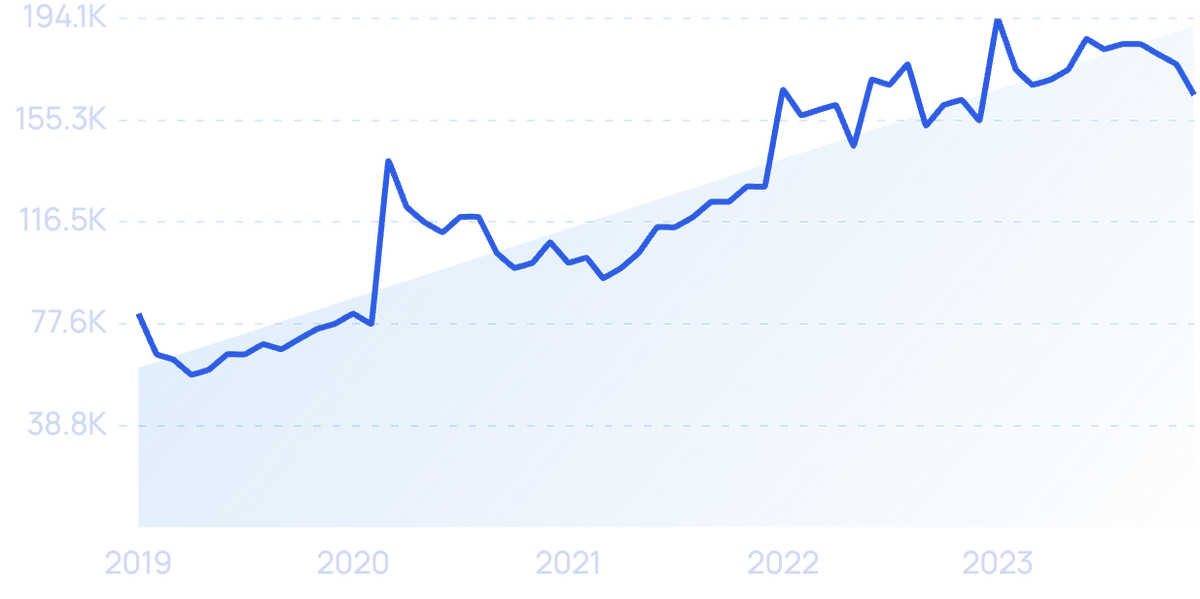
7. Free newsletters adopt a sponsored revenue model
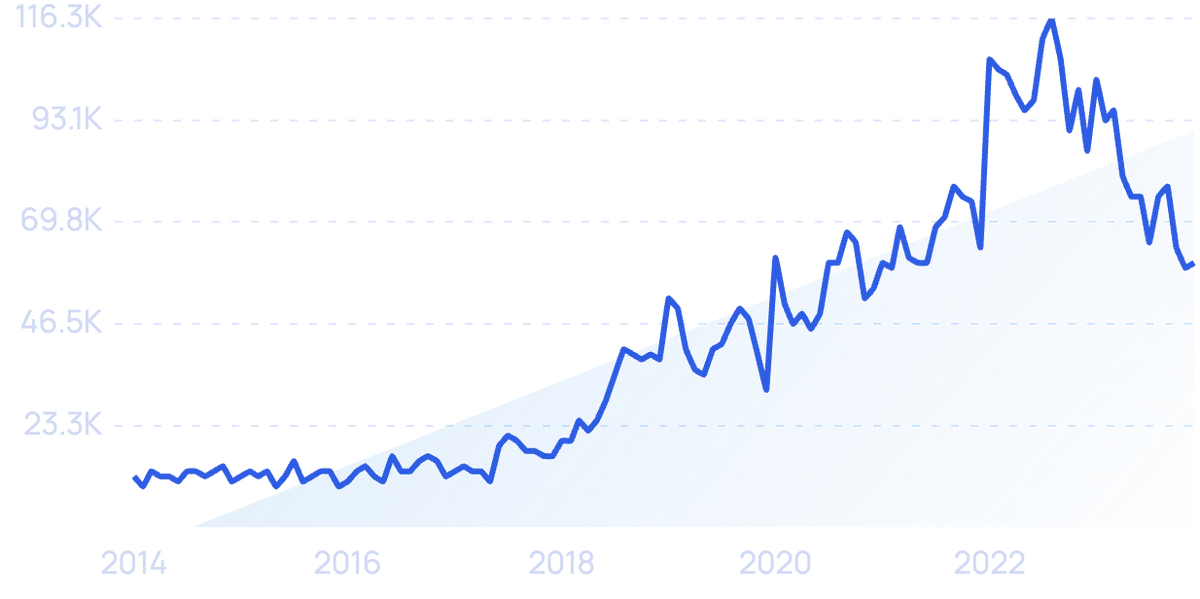
The email newsletter has long been associated with marketers wishing to build customer loyalty.
But free newsletters are beginning to sell themselves as the product.
Newsletters such as Morning Brew are popularizing a sponsorship-based business model.
Morning Brew helped pioneer newsletters as a standalone product offering.
By producing superb content and offering it for free to email subscribers, newsletters are able to generate revenue via sponsored content.
Sponsored content in free newsletters are generally ads that are integrated into the newsletter's content.
Some even offer special discounts for subscribers of that newsletter.
Like with podcast ads, sponsoring a newsletter is a relatively untapped way to get in front of potential customers.
Which is why CPMs tend to be fairly low (approx $15-25) compared to Google and Facebook ads.
That said, this model only works if the newsletter is exceptional.
42.3% of Americans subscribe to email lists for savings and sales. And 11.2% sign up because they like a brand.
Morning Brew scratches both of these itches. And they've seen rapid growth as a result - as well as a majority acquisition by Insider, valuing the newsletter at $75 million.
Morning Brew's "newsletter as the product" led to a massive acquisition.
8. Funnel software streamlines email automation
The average email marketing list size is growing by 40% per year.
And 320% more revenue is generated in automated email marketing campaigns.
On the surface, this sounds like great news. And it is.
But the downside is that automating your email marketing strategy can be tricky. Especially for non-techie folks.
That's largely why interest in funnel software has taken off in recent years.
Funnel software adds a user-friendly user interface on top of marketing automation tasks.
In fact, the name of the current market leader "ClickFunnels" stems from the fact that their software allows user to "click" together different elements from their funnel.
Searches for "ClickFunnels" have grown considerably (3,200% in 10 years).
In fact, most funnel software includes pre-made funnel templates that can be copied and pasted.
This focus on ease of use is probably why interest in funnels have taken off.
9. Newsletters become integral part of the creator economy
The creator economy is often associated with visual platforms like Instagram, YouTube and TikTok.
However, an interesting email marketing trend we're seeing is the rise of the newsletter creator.
For example, Heather Cox Richardson's newsletter "Letters From an American" brings in approximately $5M in revenue per year. Largely from fans.
She's not alone. There are several creators making a living from their newsletters.
The top creators on Substack make substantial revenue.
Like any part of the creator economy, a small number of newsletter superstars drive most of the revenue.
But it's worth noting that newsletter creators are in many cases just as successful as their TikTok counterparts.
Which explains why a number of creator-focused ESPs have launched over the last few years.
Beehiiv is a Substack competitor that's seeing significant growth.
Searches for Beehiiv are up 1,517% over the last 2 years.
Designed with newsletter creators in mind, the startup reached a reported $2.4M in ARR last year.
Conclusion
Here you are: the 8 biggest email marketing trends to keep an eye out for.
Email marketers continue to fight for eyeballs, opens and engagement.
Plus, new tools (like AI), consumer behaviors (like expecting GIFs and interactive content), and regulations (like GDPR) are forcing marketers to adapt their strategies to remain competitive.
It will be the platforms, companies and technologies that best evolve with these changes that will have the most success over the years to come.
Stop Guessing, Start Growing 🚀
Use real-time topic data to create content that resonates and brings results.
Exploding Topics is owned by Semrush. Our mission is to provide accurate data and expert insights on emerging trends. Unless otherwise noted, this page’s content was written by either an employee or a paid contractor of Semrush Inc.
Share
Newsletter Signup
By clicking “Subscribe” you agree to Semrush Privacy Policy and consent to Semrush using your contact data for newsletter purposes
Written By


Josh is the Co-Founder and CTO of Exploding Topics. Josh has led Exploding Topics product development from the first line of co... Read more


